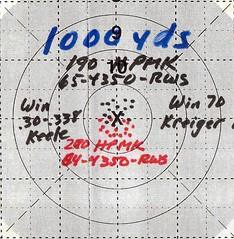pyroducksx3
Well-Known Member
I am reloading my 7 rem mag for the first time. I am shooting some factory loaded RWS brass and using the cases for reloads. I was going through my brass prep steps today. I am using redding competition sizing dies. So first I deprimed and neck sized the cases. Next I was going to bump the shoulder .02 back with the redding competition shell holder set. Now when I reload for my 300 wsm and I chamber fired cases there is resistance closing the bolt until I bump the shoulder but in this 7 mag after neck sizing there is no difficulty chambering a once fired piece of brass. So I am wondering if bumping the shoulder is necessary. I'm thinking to maintain concentricity I would want to work the brass as little as possible, right? So I skipped resizing/bumping the shoulder and I moved on making my dummy round trimmed the brass and seated a bullet .010 off the lands for a OAL of the ogive of 2.644. It fits in the magwell fine and cycles easily, so I'm thinking I will skip bumping the shoulder and just check it after every firing and when I notice difficulty chambering the fired case to bump that group of cases. Is this an appropriate line of thought? Or should I just resize the cases every time by bumping the shoulder as I'm not going to full length resize? I guess I was thinking the only reason to bump the shoulder is so it chambers easily, so if its already chambering easily why bump the shoulder at all. I appreciate your thoughts, thank you.
Last edited:

